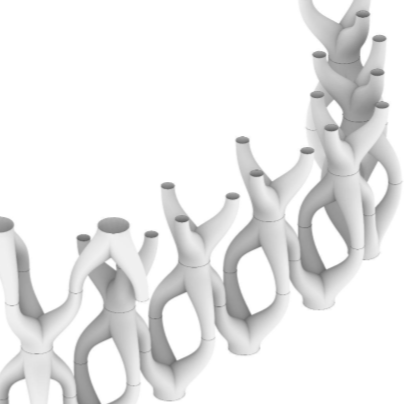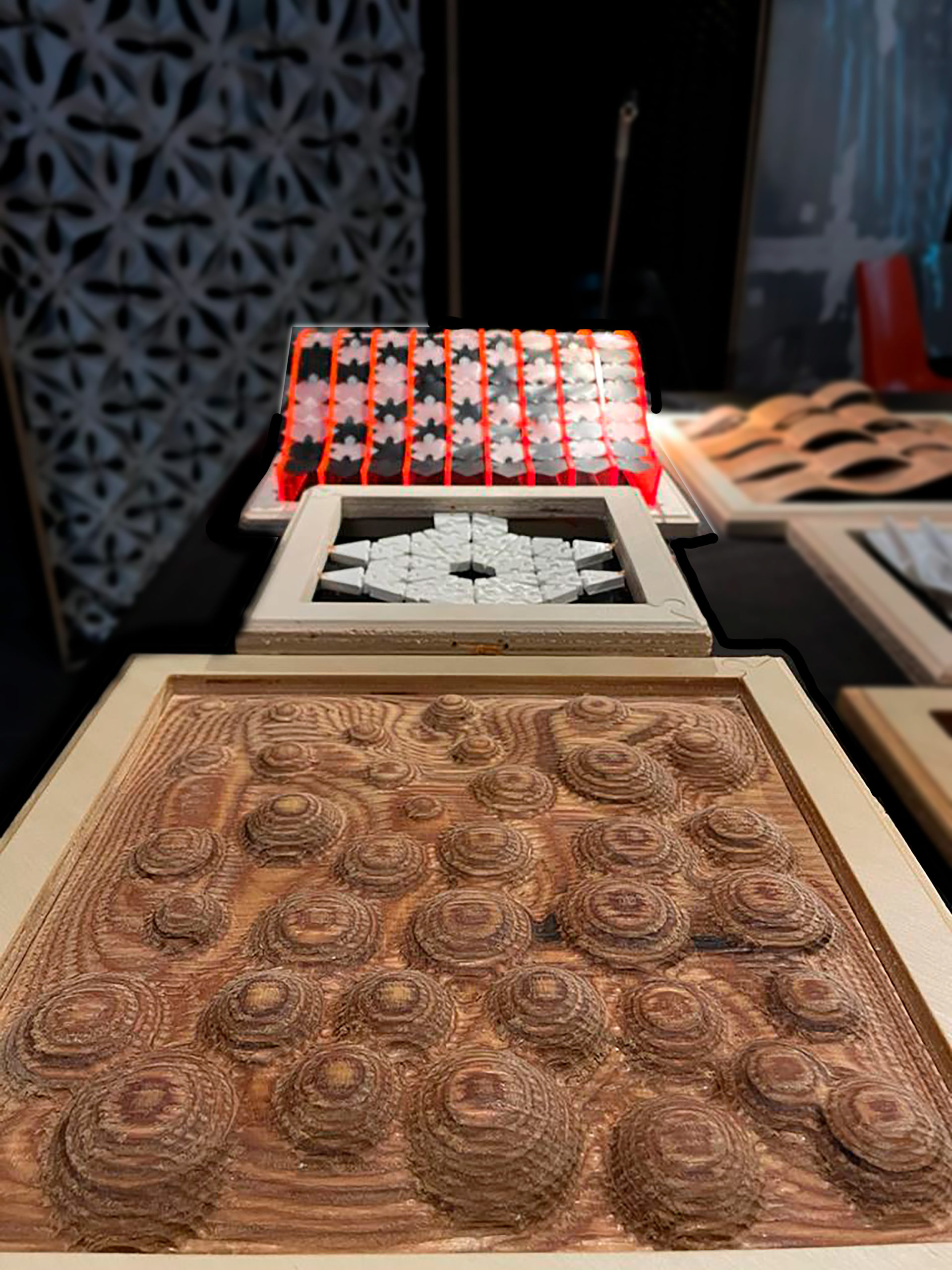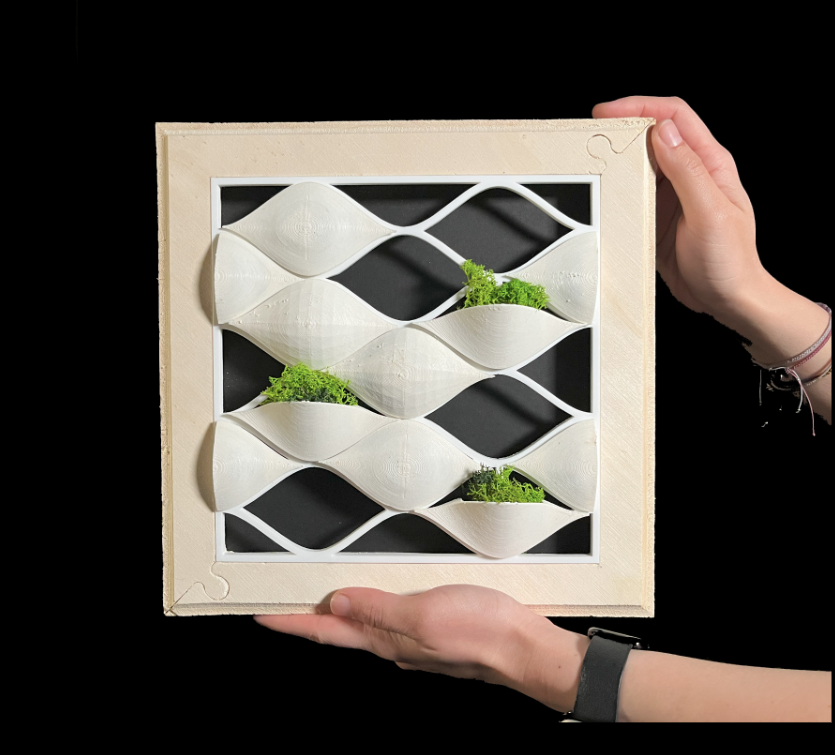Within the current global context of rapid change, integrated with the potentials of digital technologies, IAAC’s Master in Advanced Architecture (MAA) is committed to the generation of new ideas and applications for Urban Design, Self Sufficiency, Digital Manufacturing Techniques and Advanced Interaction.
In this context IAAC works with a multidisciplinary approach, facing the challenges posed by our environment and the future development of cities, architecture and buildings, through a virtuous combination of technology, biology, computational design, digital and robotic fabrication, pushing innovation beyond the boundaries of a more traditional architectural approach.
Exploration into Vertical Elements
This term, the exploration of three fabrication techniques—Laser Cutting, 3D Printing, and CNC Milling—led to the creation of three vertical facade prototypes. Drawing inspiration from organic movements and waves, our laser-cut design explores the interlocking techniques with Polypropylene and acrylic.The 3D printed geometry also explores the interlocking, this time as a mobility tool, creating a … Read more
Introduction to Digital Fabrication – Functional forms
Through the 3 digital fabrication methodologies the projects that follow aim to use the limitations and capabilities of each system to create a vertical architectural system which serves function apart from just aesthetics. The various functions served are from Natural lighting control, Sound Mitigation and Air temperature control. Laser cutting – Gothic Funk This laser … Read more
The Way Of Water
As an underlying theme we chose to explore the various movements of water, as a catalyst that drives each of our fabrication process. Laser Cut – Oscillation | 3D Printing – Coral Growth | CNC Milling – Ripple Effect LASER CUTTING | OSCILLATION The concept behind this design gets its inspiration from oscillating waves … Read more
Material Waves – Digital Fabrication
In this class we were introduced to three fabrication techniques, Laser Cutting, 3D printing and CNC milling. In each technique we were tasked with creating prototypes of vertical facade elements that could be used in architectural applications. Every two weeks of the course we learned how to use each technology and then fabricated our own … Read more






